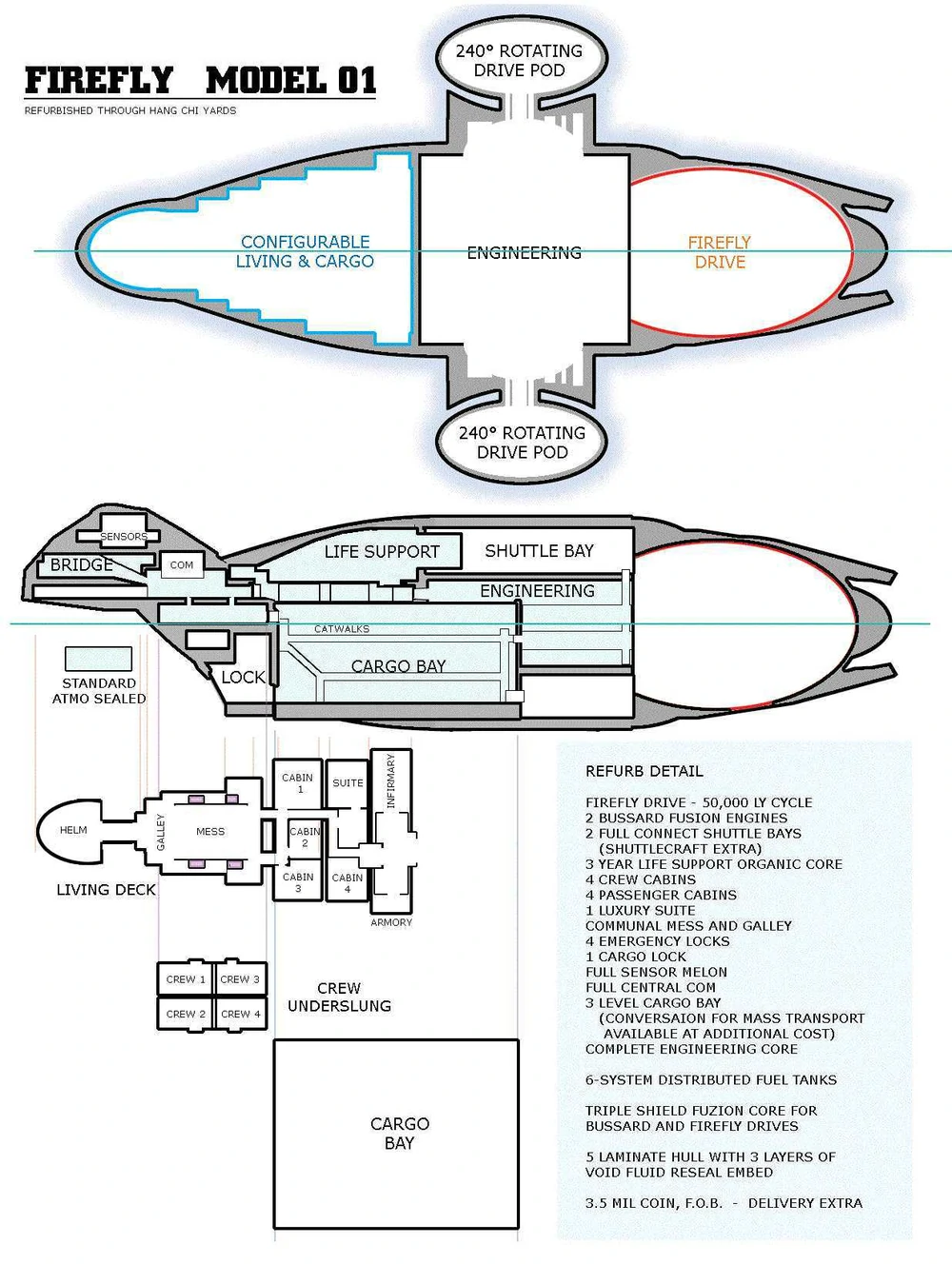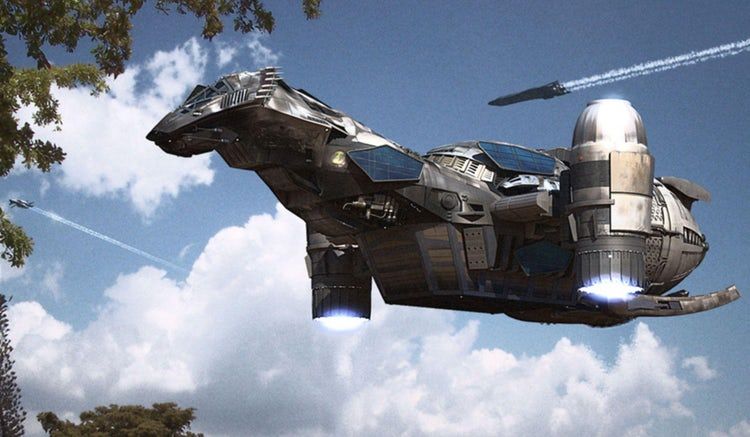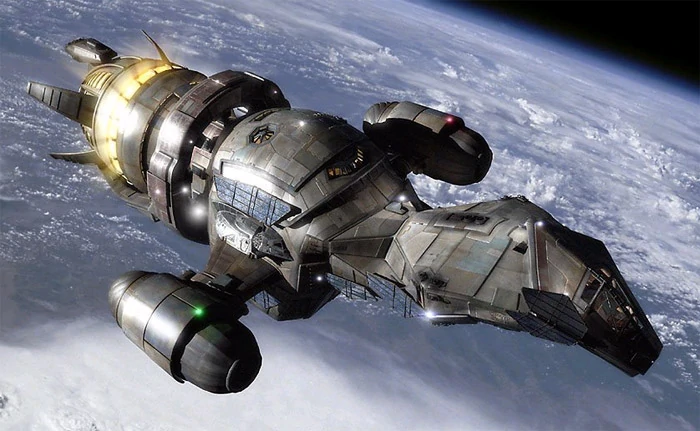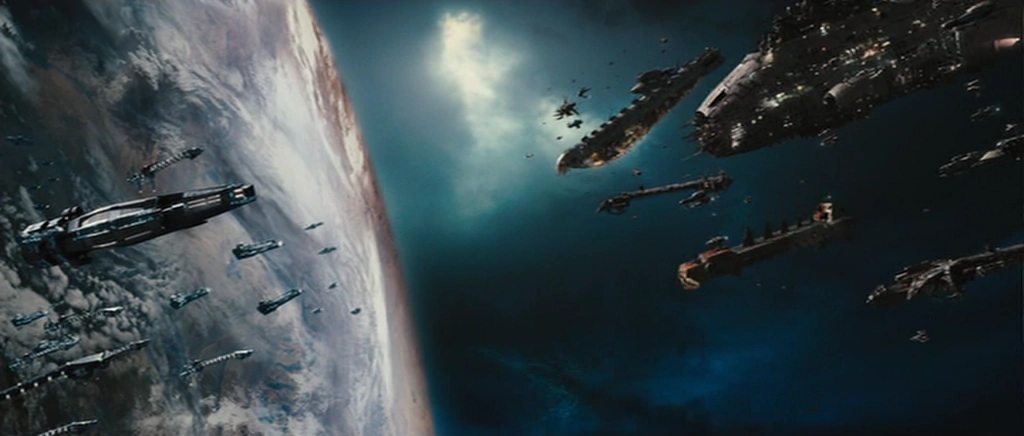‘Firefly’: The Greatest Ship in the ‘Verse – The Serenity Breakdown
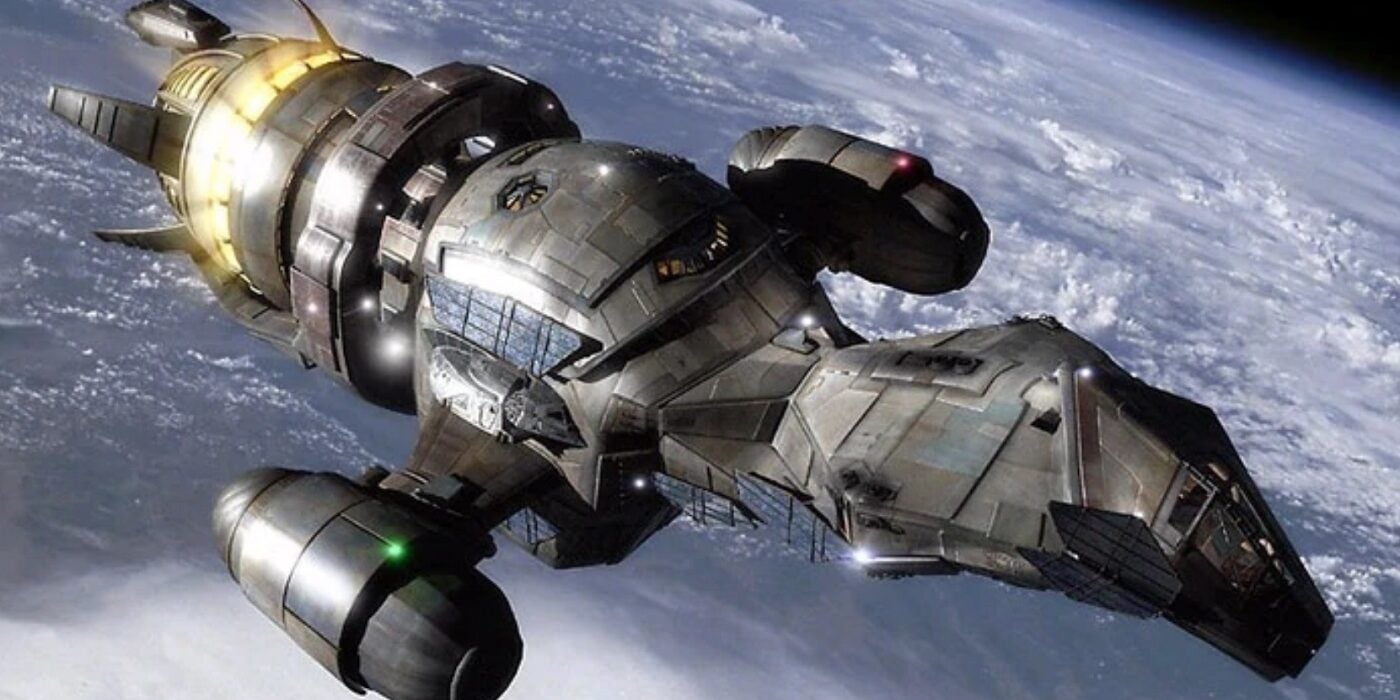
They might burn your land, but with this ship on your side, they’ll never take the sky away. We break down the Serenity.
Throughout the ‘Verse, no ship has singlehandedly helped change the course of history as much as a lone, Firefly-class transport with a perennially malfunctioning compression coil catalyzer, the Serenity.
The Serenity was present during some of the most pivotal events in the White Sun system. But how does one, unarmed ship make such a difference? To answer that, let’s look back at her history.
Firefly-Class Transport Origins
The Serenity was Firefly-class transport, Series 3. The Firefly series was a multipurpose, mid-bulk transport boat. Originally designed by the Allied Spacecraft Corporation for multirole hauling, the Firefly project was an important fixture in the early Alliance days.
The first hulls and engines were constructed at ASC’s shipyard at New Burbank, on Osiris. But final outfitting was outsourced to any number of smaller companies, including the infamous Firefly Ship Works on Hera.
All Firefly ships evolved from the same design: a large rear engine module, wing-mounted engines for VToL capabilities, and a centralized cargo section.
The original Firefly was first approved for production in 2434, with the first boats completed in 2435. The early series 1 module proved the concept but wasn’t designed with the flexibility of the later series. They lacked modular cargo areas, secondary cargo areas, and passenger berths. Even though the first Firefly vessels were capable of carrying a pair of dorsal-mounted shuttlecraft.
The Series 2 improved on the design. Larger and more streamlined, the Series 2 replaced the bulky engines from the Series 1. This enhanced its top speed but was ultimately a more temperamental design. Series 2 proved to be problematic, with only 5,000 boats sold before production was halted.
Series 3, however, was much beloved. They had a reputation for running forever if they had a mechanic “even half-awake.”
Serenity’s Design & Capabilities
As a Series 3 Firefly-class Transport, the Serenity featured a number of improvements over the earlier models. The Serenity featured extenders below the wings to help stabilize the rotating VTOL engines.
This had the benefit of keeping the engines further from the main body of the craft and meant larger shuttles could be fitted into the bays. On top of that, the VTOL engines boasted a 270-degree range of motion, meaning the exhaust could be pointed forward for reverse thrust.
Certain pilots could disable the safety allowing for each engine to rotate independently. Though this was dangerous, a daring—or desperate—pilot could use this rotation to pull off tighter turns than most other crafts are capable of.
The Series 3 was longer, as well, with a roomier interior and better facilities.
The Serenity in particular took advantage of this. Her crew was able to modify her cargo bays with hidden smuggling compartments, capable of defeating most scanners.
But it wasn’t just cargo space and creature comforts that made the serenity. On the Series 3, the old Gurstler engines were replaced with 2 Blue Sun 6V4-178-B31 Trace Compression Block 36 RCS thrusters. With a full load of fuel and an empty payload, Serenity could travel up to 400 A.U. before needing to refuel.
When carrying the maximum payload of 74.8 metric tonnes of cargo, Serenity still boasted a 44 A.U. range.
And alongside all of that: two Endo/Exo-Atmospheric Shuttles and 1 MF-813 Flying Mule rounded out her compliment.
History
Named for the decisive battle at Serenity Valley, widely regarded as the place where the Independents lost the Unification War with the Alliance, the Serenity was a refuge for her crew. Acquired by Malcolm Reynolds in 2512, shortly after the end of the Unification War, the Serenity was named that, reflecting how those who were there could never leave Serenity but would simply have to learn to live there.
For five years, the Serenity ran odd jobs, running supplies, licit and otherwise, to folks what needed ’em. But that changed in 2517 when Serenity booked three passengers: Shepherd Derrial Book, Simon Tam, and his sister, River Tam.
Bringing on the escaped River Tam, wanted by the Alliance after her escape from a psychic weapons research program, put Serenity at risk. However, her crew took on more and more dangerous jobs, including stealing the legendary Lassiter laser pistol. This job netted Serenity a much-needed retrofit, including new bracing, a cargo ramp, bomb-bay doors, and a fire suppression system. And just in time too, for a few months later, she was swept up in events around the secret Alliance project on the world of Miranda.
Serenity took her crew to learn the truth of the experiments with G-23 Paxilon Hydrochlorate. These experiments led to the creation of the Reavers. After the crew of the Serenity learned the truth, they were caught in a battle between Alliance military forces and Reavers. As the battle continued, they sped towards a comm relay moon outside the Blue Sun system.
There they spread the truth of the matter and started to bring about a change in the Alliance. Whether it would last, was anyone’s guess.
Known Crew and Residents of the Serenity
The following is a list of all known crew and long-term residents of the Serenity.
- Malcolm Reynolds: captain
- Zoë Alleyne Washburne: first officer
- Hoban Washburne: pilot
- Kaywinnet Lee Frye: mechanic
- Simon Tam: medic
- Derrial Book: shepard
- Inara Serra: Companion’s Guild
- Jayne Cobb: mercenary
- River Tam: passenger
- Bester: ex-mechanic
But for now, Serenity is still flyin’, and that ain’t nothin’

